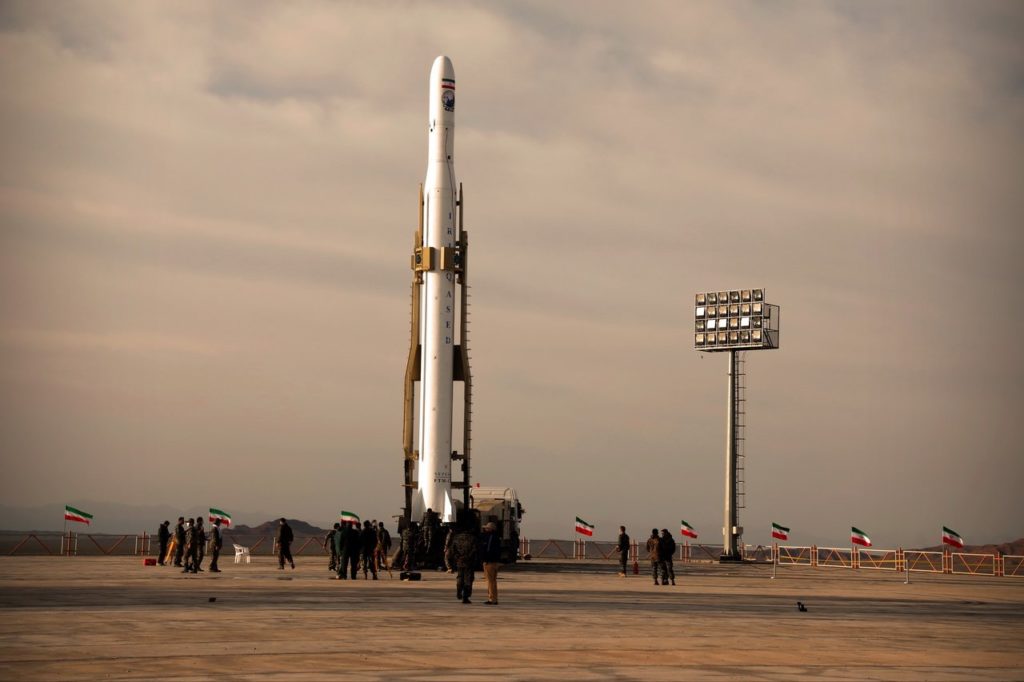April 24, 2020
Fabian Hinz
The following is an excerpt of a commentary published by the European Leadership Network.
 On 22 April, Iran successfully launched its first military satellite, Noor, using the new Qased Space Launch Vehicle (SLV). With the launch of the Qased, Iran has unveiled its parallel space program run by the Islamic Revolutionary Guard’s Corps (IRGC) for the first time. While fears about Iran’s previous space launches serving as cover for intercontinental ballistic missile (ICBM) development have been vastly overblown, there are strong indications that Iran’s emerging IRGC track does indeed represent a hedging strategy aimed at acquiring long-range ballistic missile technology.
On 22 April, Iran successfully launched its first military satellite, Noor, using the new Qased Space Launch Vehicle (SLV). With the launch of the Qased, Iran has unveiled its parallel space program run by the Islamic Revolutionary Guard’s Corps (IRGC) for the first time. While fears about Iran’s previous space launches serving as cover for intercontinental ballistic missile (ICBM) development have been vastly overblown, there are strong indications that Iran’s emerging IRGC track does indeed represent a hedging strategy aimed at acquiring long-range ballistic missile technology.
The first sign that the launch of the Qased was different from previous Iranian launches lay with the people who pressed the launch button. While traditionally Iranian satellite launches are conducted by the Iranian Space Agency, in cooperation with the Ministry of Defense, the Qased was launched by the IRGC. This novel institutional setup was also reflected in the launch location. The Qased was the first SLV launched outside the perimeter of Iran’s Imam Khomeini Spaceport, taking off from the IRGC missile development and launch complex in Shahroud instead. However, the IRGC’s role in the Qased was not merely restricted to launch operations. Both the Qased’s second stage motor, as well as the Noor satellite itself, were developed by the IRGC outside of the regular structures of Iran’s missile industry.
The recent launch was not merely a space launch conducted by the IRGC but rather the unveiling of a full-blown IRGC space program. IRGC Aerospace Force commander Amirali Hajizadeh stated that the IRGC’s space program had advanced in quiet for years and as per the IRGC’s modus operandi was only unveiled to the public after a successful test. IRGC Space Commander Jafar-Abadi declared that the IRGC’s space effort was a ‘super project’ which includes SLVs, satellites and ground stations. Open-source research indicates that IRGC has been operating an SLV development effort in parallel to Iran’s official space program since the second half of the 2000s and that the program was focused on more militarily viable solid propellants from its inception. Even though the Guard Corps’s space program suffered a severe setback when an explosion killed its leader and devastated its main research facility, the recent unveiling of the Salman, the launch of the Qased, and continuous ground testing at Shahroud offer ample proof that the program is back on track.
